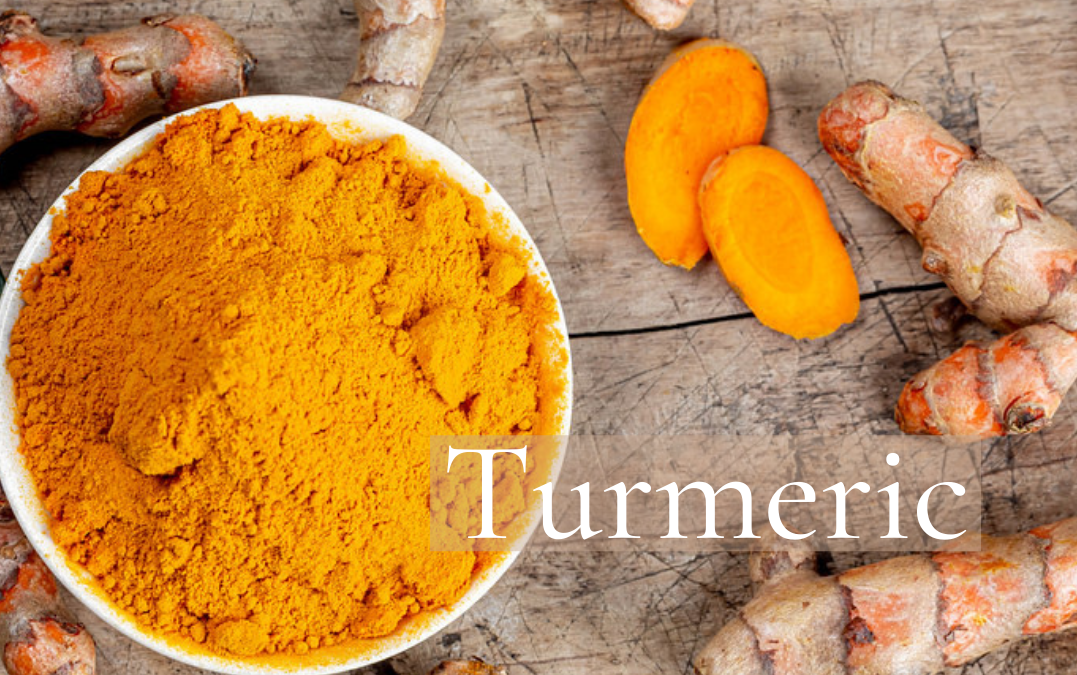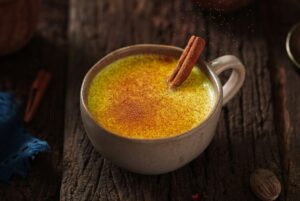Turmeric is like the secret ingredient to the elixir of life.
According to a recent article reviewed by a medical expert, turmeric is “one of the most effective nutritional supplements in existence.”*
Scroll down for our golden milk recipe–it’s simple and delicious.
The medicinal properties of this golden herb are overwhelming. Turmeric contains a powerful compound, curcumin, which has a range of positive affects:
- Supports healthy brain function (boosts brain-derived neurotrophic factor)
- Stabilizes good mood (boosts serotonin and dopamine)
- Decreases risk of Alzheimer’s disease
- Is anti-inflammatory (prevents disease)
- Increases anti-oxidant capacity in the body (stops the aging processes)
- Is anti-cancer (shown to reduce cancer cell growth)
- Relieves arthritis pain
- Helps burn belly fat
*Note: This information is not a substitute for professional medical advice, diagnosis, or treatment. It’s purpose is educational. We are here to inform you about the magic of turmeric, and encourage you to use it wisely. That said, all of the healing properties listed above are directly supported by reputable research journals. Read more here.
Here’s our three Ayurvedic tips for using this golden herb to best absorb its benefits:
1. Combine turmeric with black pepper
Turmeric is chemically activated by black pepper to improve your body’s ability to absorb it. With the help of a compound in black pepper called pipeline, the absorption rate of curcumin in turmeric is increased by 2000%!
2. Cook turmeric in ghee
Turmeric is fat soluble, so pour it (with black pepper) and other spices over hot ghee to start cooking your dish. This is a delightful method for cooking a melody of veggies, for starting a soup with onions and garlic, for roasting mung beans and basmati rice to prepare a kitchari dish, or for searing meat. Enjoy the health-benefits with amazing taste.
3. Savor the flavor
This is an exclusive excerpt from our soon to be published book, coauthored by our in-house Ayurvedic doctor Manish Chandra.
If you sample a peach and taste the sweetness it can be inferred from the sweet taste that there is a strong representation of the earth and water elements in the peach. From the astringent qualities of turmeric the earth and air elements are revealed.
- Astringent Taste
Examples: Wild geranium root, turmeric, unripe persimmon, unripe mango.
Elements: Composed primarily of the air and earth elements
Dosha effect: It increases vata and decreases pitta and kapha
Qualities: Cooling, light, and dry
Positive effects: Healing, styptic, and purifying. Reduces mucus and normalizes discharges. Reduces fat and excessive moisture. Separates impurities from tissues
Effects of overuse: Dry mouth, speech issues, and tingling sensations of the limbs
The properties of the foods and herbs we eat are related to their tastes. In Ayurveda food is considered as medicine.
The science of taste and the related energetics of foods and herbs allows us to use food and herbs pharmacologically to not only promote physiological functioning but also to heal problems in the mind.
This is important because psychological disturbances may overwhelm physiological factors in treatment! Emotions can influence our bodies in the same way as do foods, drugs, alcohol, activities, injuries and infections. Further, this process encourages prevention of disease.
In Ayurveda it must be remembered that who it is that is eating the food is still far more important that what it is they are eating. Given identical ingredients, people still digest differently. Each person’s systems have inherent tendencies to produce certain metabolic faults that will be affected by the foods they eat. It is for this reason that one man’s food is another man’s poison.
How can I apply this to my life right now?
If you’re curious about how our knowledge Ayurveda, translated as the “science of life” can help you in your daily journey of striving for health and wholeness, schedule a free 15-minute phone consultation or be brave and book your initial consultation. We are offering a generous 30% off initial appointments until the end of Spring. If you have any questions or specific issues, just email or call the office. We’re here for you (literally).
Golden Milk Recipe
Ingredients:
- 1 cup milk of your choice (whole cow’s milk is traditional)
- 1 teaspoon turmeric powder
- 2 pinches black pepper
- 1 tsp ghee
- Honey or organic sugar to taste
- Optional additional spices:
ginger
cinnamon
cardamom
nutmeg
saffron
coriander seeds or powder
Directions
- Place milk in a saucepan over low/medium heat.
- Bring to low boil.
- Add all ingredients except the honey or sugar. Let the mixture simmer for a few minutes, stirring occasionally.
- Turn off heat, and allow the mixture to cool to a warm drinkable temperature.
- When the mixture has cooled, add honey or sugar to taste.
- Serve warm.

